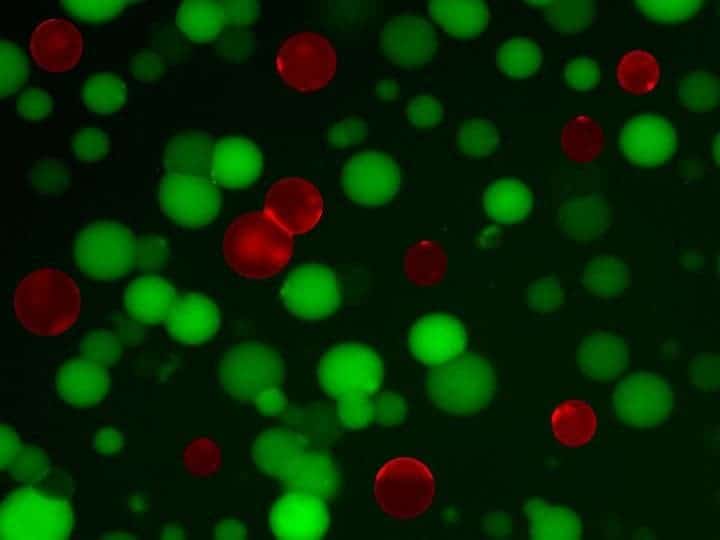Research at the University of California, Davis, has resulted in artificial cells that cannot grow or divide but will unleash a can of whoop-ass on any bacteria they encounter.

The artificial cells mimic some of the properties of living cells but don’t grow and divide.
Image credits Cheemeng Tan / UC Davis.
Although researchers have successfully created artificial cells in the past, they remained stable only in certain conditions. The key limitation was that these cells could only survive in nutrient-rich environments, as they lacked the capacity to feed themselves.
The advancement this present paper reports on is that the team’s “lego block” artificial cells can survive and work in a wide variety of conditions with limited resources. This greater self-sufficiency was achieved by the team’s efforts in refining the cells’ membranes, cytosol (the ‘soup’ inside cells), and their genetic material.
Teeny-weenie death machinie
“We engineered artificial cells from the bottom-up — like Lego blocks — to destroy bacteria,” said Assistant Professor Cheemeng Tan, who led the work.
“We demonstrated that artificial cells can sense, react and interact with bacteria, as well as function as systems that both detect and kill bacteria with little dependence on their environment.”
The cells are built from liposomes — bubbles with a cell-like lipid membrane — and purified cellular components including proteins, DNA, and assorted metabolites. They have all the fundamental components of live cells, but they’re short-lived and cannot divide, so they can’t make more of themselves.
The cells were forged with a purpose, however — to beat up E. coli bacteria. By tweaking their genetic material, the team designed these cells to pick up on and react to a unique chemical signature given off by E. coli. Laboratory tests showed that once these artificial cells pick up on the scent, they will attack and destroy all E. coli in a culture.
As the cells are much more robust and self-sufficient than previous ‘models’, they can be employed even in less-than-ideal or changing conditions. This enables them to have a much broader scope of potential applications compared to any other artificial cells currently at our disposal.
The team has high hopes for their spawn. The researchers envision using these cells in an antibacterial role, injecting them into patients suffering from infections resistant to conventional treatments. Alternatively, they might be used for targeted delivery of drugs at specific locations and times, or as biosensors.
The paper “Minimizing Context Dependency of Gene Networks Using Artificial Cells” has been published in the journal Applied Materials and Interfaces.









